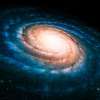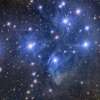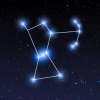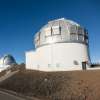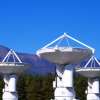Giant Void
One of the Largest Known Voids in the Universe
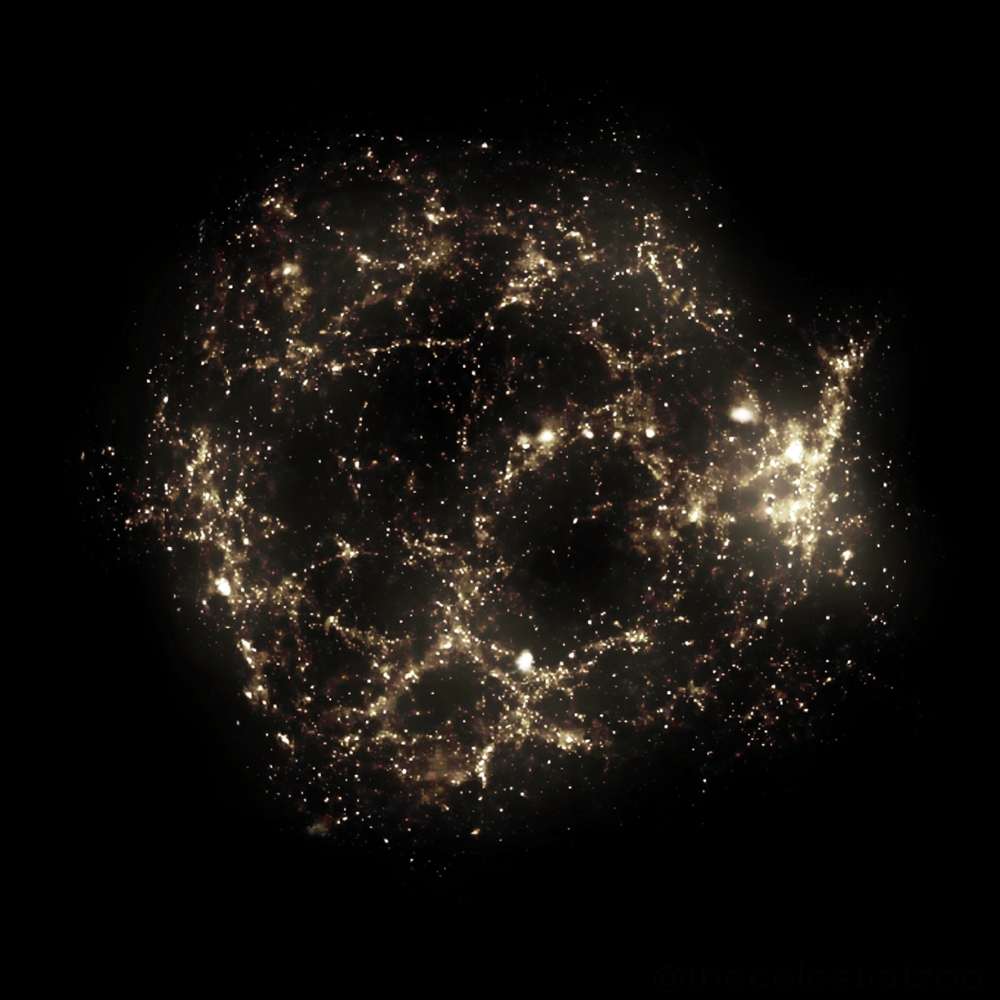
Quick Reader
| Attribute | Details |
|---|---|
| Name | Giant Void |
| Type | Cosmic void |
| Location | Constellation Canes Venatici |
| Redshift (z) | ~0.116 |
| Estimated Distance | ~1.5 billion light-years |
| Size | ~1.3 billion light-years across (diameter) |
| Density Contrast | Significantly underdense region |
| Discovery | Identified in 1988 by Brent Tully et al. |
| Observational Methods | Galaxy redshift surveys, cosmic microwave background (CMB) anomalies |
| Significance | One of the largest known underdense regions in the universe |
| Nearby Structures | Hercules Supercluster, Coma Wall, Great Wall |
| Research Focus | Dark energy effects, large-scale structure, ISW effect |
Introduction – A Vast Cosmic Desert in the Universe’s Tapestry
While much of the universe is filled with galaxies, clusters, and bright energetic structures, there are also immense empty spaces—regions so vast and so underpopulated that they appear almost completely dark. One of the most dramatic of these is the Giant Void—a cosmic cavity nearly 1.3 billion light-years across, making it one of the largest known voids in the observable universe.
Discovered in the late 20th century and further studied through redshift surveys and anomalies in the cosmic microwave background (CMB), the Giant Void lies in the direction of Canes Venatici and presents an extreme example of the universe’s large-scale inhomogeneity.
Voids like this are not truly empty—but they contain far fewer galaxies, dark matter, and gas than the cosmic average. They represent regions where gravitational structure formation has been slower or suppressed, possibly offering clues about dark energy, inflation, and even the topology of space-time.
Where Is the Giant Void Located?
The Giant Void occupies a region of the sky between right ascension ~13h to 14h and declination +30° to +40°, situated within the boundaries of Canes Venatici and neighboring areas. Despite its massive size, it’s extremely difficult to observe directly due to the absence of bright galaxy concentrations.
Key Positional Data
Sky Position: Near Canes Venatici, northern hemisphere
Redshift (z): ~0.116
Distance: ~1.5 billion light-years from Earth
Angular Diameter: Covers a wide span of the sky, ~10–12° at its greatest extent
What Is a Cosmic Void, and How Does the Giant Void Fit In?
1. Definition of a Void
A cosmic void is a region of the universe with a very low density of galaxies and matter.
Voids range in size from tens to hundreds of millions of light-years.
They form naturally as gravitational collapse pulls matter into filaments and clusters, leaving empty zones between.
2. The Giant Void’s Unusual Size
While many voids are 50–150 million light-years across, the Giant Void spans over a billion light-years.
It may be composed of several smaller adjacent voids, stitched together by underdense filaments.
Its immense scale challenges standard simulations unless it’s treated as a rare statistical anomaly.
Discovery and Confirmation
1. Initial Identification
In 1988, Brent Tully and colleagues noticed a dramatic drop in galaxy counts in redshift surveys centered in Canes Venatici.
Cross-referencing with IRAS galaxy catalogs and radio sources confirmed the underdensity.
2. CMB and ISW Anomalies
The Integrated Sachs-Wolfe (ISW) effect may enhance or suppress CMB temperature fluctuations in large voids.
Some researchers have connected cold spots in the CMB (notably the WMAP and Planck cold spot) with regions like the Giant Void—though this remains debated.
Structure and Contents of the Giant Void
Although called a “void,” this region is not completely empty. It contains:
1. Sparse Galaxy Groups
Scattered throughout the void are low-luminosity galaxies, dwarf systems, and isolated spirals.
These galaxies often show undisturbed, low-interaction evolution, useful for studying galactic isolation effects.
2. Dark Matter Distribution
Lensing studies and simulations suggest that dark matter density is significantly lower than the cosmic mean.
However, even within the void, traces of dark matter filaments may exist—remnants of early density fluctuations.
3. Intergalactic Gas
Lower temperatures and densities mean less ionized gas, contributing to a reduced X-ray and radio background.
Some voids, including parts of the Giant Void, may contain cold gas clouds left unheated due to lack of interaction.
How the Giant Void Shapes Cosmic Expansion
Voids like the Giant Void do more than just leave space empty—they actively shape the dynamics of cosmic expansion, gravitational flow, and how light travels across the universe.
1. Local vs. Global Expansion
Voids are underdense regions, meaning they expand faster than the cosmic average.
Matter flows outward from void centers into denser regions like filaments and walls.
The Giant Void’s massive size means it could influence:
Peculiar velocities of nearby galaxies
Bulk flows of galactic motions across hundreds of Mpc
2. The ISW Effect and CMB Cold Spots
The Integrated Sachs–Wolfe (ISW) effect occurs when photons from the Cosmic Microwave Background (CMB) pass through time-evolving gravitational potentials.
In large voids, photons gain less energy exiting than they lost entering, creating slightly cooler regions in the CMB.
Could the Giant Void explain the CMB Cold Spot?
A cold spot in the CMB, located in Eridanus, has been linked by some studies to a possible supervoid—though the Giant Void lies in a different direction.
Controversy remains: while some simulations suggest voids can create ISW-scale cold spots, others argue the effect is too small unless the void is extremely deep and large, like the Giant Void.
Implications for Cosmology and Inflation
1. Rare or Natural?
According to ΛCDM cosmology (Lambda Cold Dark Matter), voids of the Giant Void’s size should be extremely rare—less than 1% of the volume.
If such voids are found to be more common than expected, it could imply:
Problems with current structure formation models
Need for non-Gaussian initial conditions
Potential modifications to inflation theory
2. Constraints on Dark Energy
The ISW effect is sensitive to dark energy.
Observing temperature shifts in the CMB through voids allows cosmologists to:
Test dark energy’s influence on space-time curvature
Study how voids evolve over time
3. Modified Gravity Theories
Some models (e.g., f(R) gravity, TeVeS) suggest different growth patterns for voids.
The Giant Void may serve as a testing ground to distinguish between standard and alternative gravity models based on:
Void profiles
Density gradients
Void-galaxy cross-correlations
Voids and the Cosmic Web
Though empty compared to clusters, voids still define the scaffolding of the cosmic web:
1. Boundary Definition
The Giant Void’s edges are marked by walls of galaxies, including:
The Coma Wall
Hercules Supercluster
Nearby filament bridges connecting distant galaxy groups
2. Flow of Matter
Matter moves from the void’s center outward into walls and nodes.
This large-scale flow:
Shapes galaxy motion
Influences filament orientation
Drives gravitational evolution of surrounding regions
Unique Galaxies Inside the Giant Void
Voids are not completely lifeless. Galaxies found within them are often:
| Feature | Typical Void Galaxies |
|---|---|
| Type | Dwarf galaxies, irregulars, isolated spirals |
| Star Formation | Ongoing (due to lack of interactions) |
| Interaction History | Minimal |
| Metallicity | Often lower than average |
| Use in Research | Study early galaxy evolution in isolation |
These galaxies may offer clues to primordial conditions, since they evolve without strong environmental interference from dense cosmic neighborhoods.
How Do Astronomers Study the Giant Void Today?
Studying the Giant Void is a complex task that relies on multi-wavelength surveys, statistical models, and advanced simulations.
1. Redshift Surveys
2dF Galaxy Redshift Survey (2dFGRS) and Sloan Digital Sky Survey (SDSS) have mapped thousands of galaxies in and around the Giant Void.
These surveys show a statistical underdensity in galaxy counts consistent with a supervoid.
2. Cosmic Microwave Background Observations
WMAP and Planck missions provide temperature maps of the CMB.
Scientists use these maps to look for cold spots possibly caused by large voids via the ISW effect.
3. Weak Gravitational Lensing
Lensing allows indirect measurement of dark matter distribution.
The Giant Void shows reduced lensing signals, supporting its status as a dark matter underdense zone.
4. Upcoming Surveys and Simulations
LSST (Rubin Observatory) will deepen our map of voids in the next decade.
Simulations like IllustrisTNG and MillenniumTNG are modeling void growth under different cosmological parameters, helping interpret data from large-scale structures like the Giant Void.
Frequently Asked Questions (FAQ)
Q: Is the Giant Void really empty?
A: No. It’s underdense but not completely empty. It contains some galaxies, dark matter, and intergalactic gas, but much less than surrounding regions.
Q: How big is the Giant Void?
A: It’s estimated to be ~1.3 billion light-years in diameter, making it one of the largest known voids in the observable universe.
Q: Could the Giant Void explain the CMB Cold Spot?
A: The idea has been proposed but remains controversial. The Cold Spot lies in a different region (Eridanus), possibly caused by a separate supervoid. The Giant Void’s contribution to the CMB anisotropies is still debated.
Q: How rare are such large voids?
A: According to standard cosmology, voids as large as the Giant Void are extremely rare. If more are discovered, it could challenge existing models of inflation and structure formation.
Q: What can void galaxies teach us?
A: Void galaxies evolve with minimal environmental influence. Studying them reveals insights into:
Isolated star formation
Low-metallicity evolution
Primordial galaxy behavior
Final Thoughts – A Window into the Universe’s Silent Architecture
The Giant Void may lack the brilliance of quasars or the grandeur of galaxy clusters, but its emptiness is equally revealing. As one of the largest known underdense regions in the universe, it offers an unparalleled laboratory for studying:
The nature of dark energy
The growth of cosmic structure
The limits of our standard model
In its silence, the Giant Void speaks volumes. It reminds us that the universe is not only made of stars and galaxies—but also of the spaces in between, where the deepest cosmological truths may lie.
With new surveys on the horizon and increasingly powerful simulations, the Giant Void will continue to shape cosmological research—quietly, but profoundly.

